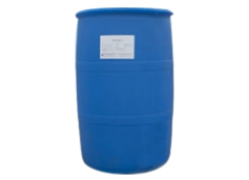There were two treatments with surfactant (APG) and control (CK) without surfactant, and each treatment had three repetitions. The addition amount of surfactant APG is 100mg kg − 1 (stacking). During the stacking process, samples were collected from different parts of the compost on the 0d, 3D, 5D, 7d, 14d, 21d and 28d of the compost. After full mixing, the number of microorganisms and enzyme activity of the compost were measured. The test was conducted for 30 days (from August 11 to September 9, 2008).

The composting temperature is measured by PT-100 platinum electrode at the center of the compost, at 10:00 a.m. and 17:00 p.m. every day. The number of microorganisms was determined by plate colony counting method [29]. The culture media used for counting bacteria, actinomycetes and fungi were beef extract peptone agar medium, Bengal red agar medium and modified Koch No. 1 medium.
The decomposition of cellulose contributes to the formation of humus and the release of carbon nutrition. Therefore, cellulase is a crucial hydrolase in composting. Studying its activity changes can understand the composting process. It can be seen from figure 3D that the cellulase activity of CK treatment increased first and then decreased, while that of APG treatment showed a bimodal curve. Both CK treatment and APG treatment reached the peak on the 3rd day of composting, and the peak values of APG treatment and CK treatment were 58.77 respectively μ G ・ min − 1 and 30.62 μ G ・ min − 1, the difference was significant (P < 0.05). The significant increase of cellulase activity may be due to the surfactant improving the permeability of microbial cells, which is more conducive to the secretion of extracellular enzymes. With the increase of composting temperature, a large number of molds that play a key role in cellulose degradation die, and cellulase activity decreases sharply. After entering the cooling period, the decreasing trend of cellulase activity of CK treatment slowed down, while the cellulase activity of surfactant treatment increased again, forming a small peak. When the compost entered the maturity stage, the cellulase activity of the two treatments reached a stable state.
Catalase is a kind of protective enzyme, which can relieve the toxic effect of hydrogen peroxide produced by biological respiration and biochemical oxidation of organic matter in the process of composting. Fig. 3A shows the change trend of catalase activity in this test. As can be seen from Fig. 3a, compared with CK treatment, the addition of surfactant APG basically did not change the catalase activity in compost. In the whole composting process, the catalase activity of APG treatment and CK treatment basically remained stable in the middle and early stage, both between 0.52 ~ 0.62 mmol g − 1. With the progress of composting, the catalase activity began to rise gradually from the composting temperature decreased to 40 ℃ to the end of composting, and the activity values of the final two treatments reached about 1.17 mmol g − 1. This change trend may be related to the change of composting temperature, substrate and microbial population. The research shows that the activity of hydrogen peroxide is closely related to the conversion of organic matter. The late stage of composting is a period of massive humus formation, so catalase may also be closely related to humus formation in the composting process.